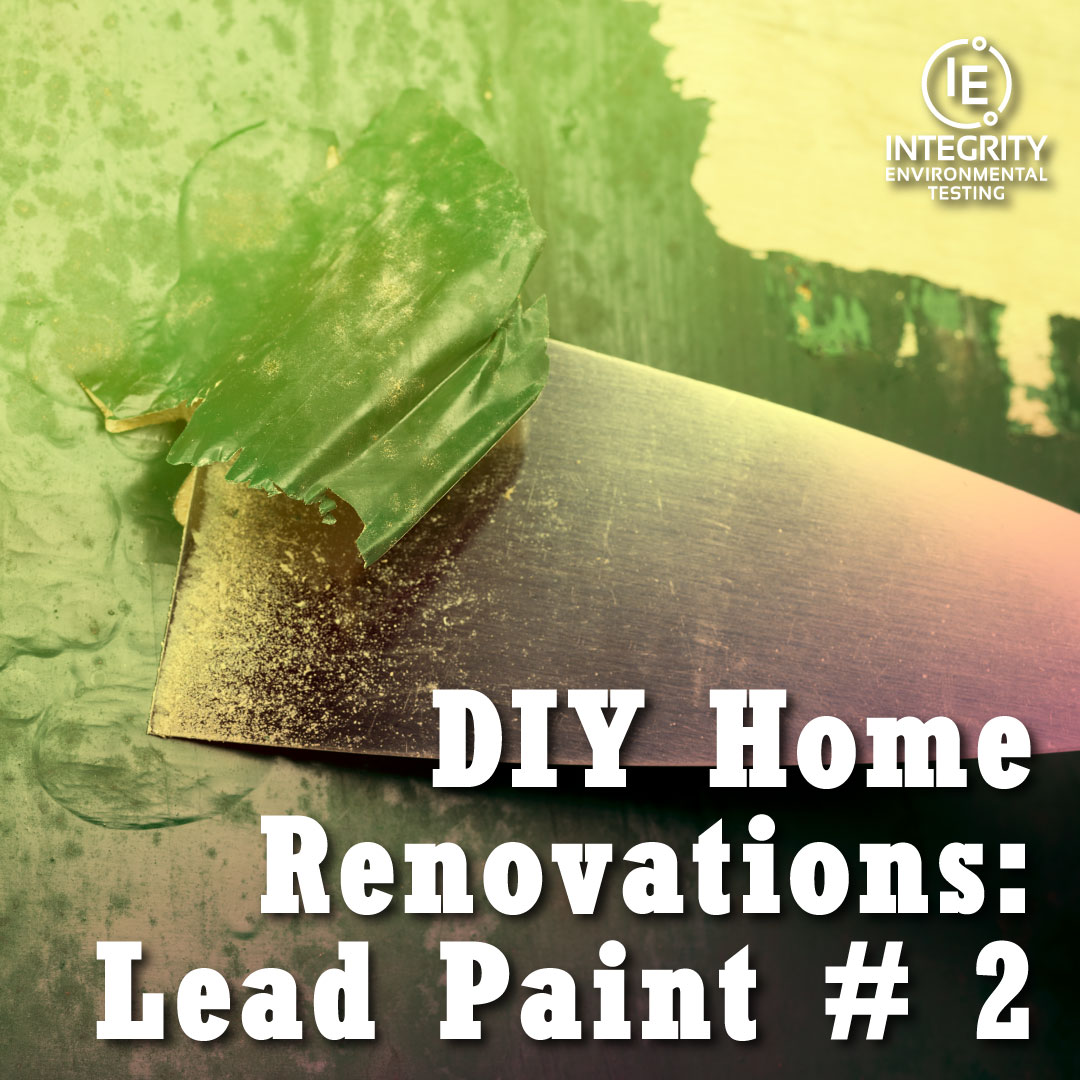
We put together a guide on DIY Home Renovations, and what you should do if your pre-1978 home or building features lead-based paint. Before you go on – Read the First Article.
First, we’d like to stress the importance of testing for lead paint when you are ready for home remodeling. If you don’t know – don’t take any chances. Test. Our state-of-the-art technology can determine instantly if your paint is lead or safe.
How to Minimize Lead Dust
Renovation activities like scraping, drilling, cutting, or demolishing can release dust containing lead particles into the air. However, by employing the right tools for lead-based paint removal and adhering to simple practices, you can effectively control and minimize dust. Keeping your work area isolated from the rest of your home is key to containing dust.
Recommended tools and equipment to help DIYers minimize dust:
- Wet-dry sandpaper or sanding sponge
- Spray mister or pump sprayer to dampen surfaces before sanding, scraping, drilling, or cutting
- Heavy plastic sheeting
- Utility knife or scissors
- Masking tape, duct tape, or painters’ tape
- High Efficiency Particulate Air (HEPA) vacuum cleaner
- Heavy-duty plastic bags
- Tack pads, paper towels, or disposable wipes
- Low-temperature heat gun
- Chemical strippers (with caution)
- Power tools with HEPA filter-equipped vacuum attachments
Leave Your Work Area Clean
At the end of each day and upon completion of your DIY project, it’s essential to leave your work area clean and free of dust, debris, or residue. A clean work environment not only minimizes dust but also protects you and your family from potential lead exposure.
Consider using the following supplies for cleaning:
- Heavy-duty plastic bags for trash disposal
- Disposable wet-cleaning wipes or hand towels
- All-purpose cleaners
- Mop and disposable mop heads
- Two buckets (or two-sided bucket with ringer)
- Shovel and rake
- Wet mopping system
- Electrostatically charged dry cleaning cloths
Maintain cleanliness by disposing of trash in heavy-duty plastic bags, frequent vacuuming with a HEPA vacuum cleaner, daily cleaning of tools, and regular hand and face washing. Ensure that non-workers are kept out of the work area to prevent contamination.
Control Your Lead Waste
Effective waste management is essential to prevent the release of dust and debris during disposal. Collect all waste materials, including dust, debris, paint chips, protective sheeting, and used protective gear, in heavy-duty plastic bags. Seal the bags securely with duct tape, and consider double bagging to prevent tears. While most residential renovation waste is classified as solid, non-hazardous waste, always check local waste disposal regulations before disposal.
Clean One More Time
After completing your DIY home renovation project, it’s time for a final cleanup before allowing family members back into the work area.
Here’s what you should do:
- Mop uncarpeted floors thoroughly
- Clean walls with a HEPA vacuum or a damp cloth
- Vacuum all surfaces and objects with a HEPA vacuum
- Wipe down all surfaces with wet disposable cleaning cloths until clean
For added assurance, consider hiring a certified lead sampling technician or risk assessor to perform clearance testing and confirm the cleanliness of your work area.
Stay tuned for more expert advice on safely navigating DIY home renovations while minimizing exposure to lead and other harmful substances. Remember, Integrity Environmental Testing is your perfect partner for lead-based paint testing in any renovation project.
We want to acknowledge that the content in this blog post has been adapted from valuable information provided by the Environmental Protection Agency (EPA). Their guidance on lead precautions during DIY remodeling serves as a cornerstone for ensuring the safety of homeowners and their families.

